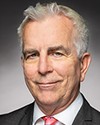Thank you.
Good morning, honourable members.
My name is Guy Felicella. I'm here to speak to you today as someone who has struggled with drug use for more than two decades. I lived on the streets. I was a dealer. I went to jail. I survived six overdoses and severe infections before I found recovery. I now have a job helping others, a family and a life that I love.
Before I give my statement, I want to say that I was hesitant to appear at this committee. I've watched several of your meetings since February and have been disappointed by the witness testimony being taken out of context and shared on social media. This is an issue that I care deeply about, so I'm here to share my story and what I know and to ask you to treat this crisis with the integrity it needs.
Here is my key message: The cause of today's crisis is contaminated street drugs provided to Canadians by organized crime, full stop.
Luckily for me, when I started using substances in 1981 to deal with depression and suicidal thoughts at the age of 12, street drugs were not yet contaminated with unknown quantities of fentanyl, benzos and xylazine.
By my twenties, I was addicted to heroin. I was navigating the hierarchies of prison and gangs, seeing death and violence, facing threats to my safety and my life, and dealing with the extreme challenges of living on the street. I was able to survive all this, in part, because even though they were illicit, I knew the drugs I was consuming.
When North America's first supervised consumption site opened in 2003, my life changed immediately for the better. At Insite, I received clean needles, which reduced my risk of overdose and cut my risk of dangerous infections. I got health care and support services. Every time I asked for it, I got help entering detox and treatment programs.
Insite's records show that I used this harm reduction facility more than 4,000 times in 10 years.
I know some of you think I didn't deserve that level of support and that I should have been left to die from my trauma, my addiction and my choices. However, my wife, my three kids, the people I have supported into recovery and many of the youth I've helped redirect would disagree with you. Maybe even the mayor and council of the City of Vancouver would disagree too, since last month they declared a day in my honour for all the work I do to help people.
I experienced multiple overdoses at Insite, including my last two on the same day in 2013. All overdoses were reversed with naloxone. That staff group there saved my life.
It's probably not a coincidence that fentanyl first appeared in B.C. in 2013, but I don't know if it was in the drugs that nearly killed me. That was also the year, after many attempts, that I achieved recovery and it stuck. If I hadn't, I wouldn't be here to talk to you today.
The heroin I was using, which killed 334 people in 2013, has now completely been replaced in the drug supply by an ever-changing toxic mix of fentanyl and other adulterants. This was a massive jump in potency when supply chains were interrupted during the pandemic.
Last year, in 2023, toxic drugs, sadly, killed over 2,500 British Columbians. That's more than seven times the number of deaths, and with that comes an equal increase in related physical and brain injuries; pressure on first responders, health care and recovery programs; and impacts to public safety and to our communities. That's more than seven times the impact in 10 years. That's over 600%. We don't have the resources or people to deal with such a huge increase over such a short period of time.
This deadly trend is repeating in every province across Canada and every community in North America, regardless of drug policies, which brings me back to my key message. This is a toxic drug crisis. It's not a policy crisis. It's not an addictions crisis. It's not because of wacky people or wacky ideas. It's not caused by harm reduction, safer supply or decriminalization, and every single one of you knows this.
You've heard from over 50 witnesses, and you've received 20 briefs. This must be clear acknowledgement that toxic, illicit drugs are the cause of this public health emergency, and the public must be informed and warned about where the real risks lie. You are hurting people when you say otherwise.
Different experts have different ideas and solutions, but if there is no agreement on the cause of the crisis, then your work here at this committee is absolutely pointless. Only from shared understanding can real solutions, rather than campaign slogans, be developed, debated and decided.
Thanks for your time, and thanks for listening.



